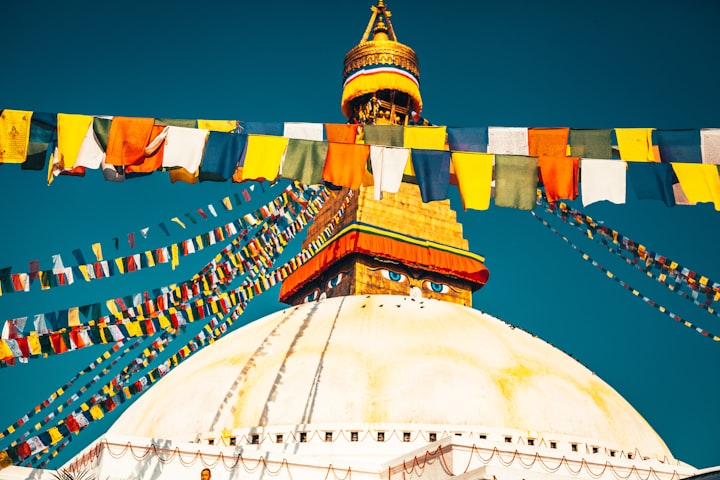Cows, Cairns and the Rugged Wilderness of Caledonia
Noble Beasts of the Scottish Highlands

In October 2017, my partner and I left the frenetic and frenzied atmosphere of a bustling city in Southern England and headed north, to the remote and dramatic wilderness of Scotland. We were burnt out and in desperate need to get away for a while, to reconnect with nature.
Nestled between the western shore of Loch Ness and a sprawling hillside forest, a minute shepherd's hut was awaiting our arrival. We had signed up for a volunteering opportunity with Workaway, an online platform that pairs travelers with hosts for cultural exchange. The shepherd's hut was to be our new home in exchange for looking after a couple of holiday lodges. And what was supposed to be a three-month experience, quickly turned into a fourteen-month adventure.

Within minutes of landing in Inverness, we were completely spellbound by this country's untamed wilderness and rugged beauty. I had always heard that Scotland was beautiful, but it surpassed my expectations so much that, four years later, I am still living here and now working for a conservation organization to protect what remains of the declining wilderness.
It's hard to put into words that brief but unforgettable period of my life. I can attempt to paint a picture using flowery words and superlatives, but when it comes right down to it, it's inexpressible.
Partly, what made this experience so precious and impactful beyond measure, was our frequent encounters with the wild and wonderful creatures that occupy the natural world. Those beautiful beings with whom we share this beautiful planet but so rarely get the chance to see.
It may be hard to accurately describe the experience of waking up in the middle of the night to the terror-inducing screeches of a barn owl which you mistake for the sound of someone being murdered, or the feeling of summiting a mountain only to find yourself standing above the clouds and surrounded by hundreds of deer. Fortunately, and perhaps ironically, our modern technology offers us some mitigation: phone cameras.

All of the pictures in this article were taken with a Samsung galaxy and edited using Snapseed. Not a professional camera, not the greatest phone, and a free app. It just goes to show that you don't need expensive equipment to take great photos and tell a good story. As far as I can tell, it comes down to two things:
1. The ability to recognize a good opportunity when one presents itself,
2. Serendipitous timing.
A perfect example of good timing can be illustrated in the following picture.

Did you know there were wild reindeer in Scotland? We didn't.
Hunted to extinction around 800 years ago and re-introduced in 1952, the reindeer of Scotland are located in a subarctic landscape of the Cairngorms national park. It is the only habit within the UK that is able to support these magnificent creatures.
They are free-roaming for most of the year, but during the winter it is possible to get up close and personal with them whilst they feed. Lucky for us, we were in the right place at the right time.

The great thing about taking photos in Scotland is that very little editing is required. The perpetually changing sky and rich, dramatic landscapes result in an endless variety of contrast, lighting, and subject matter.
The main things to consider are framing the shot and remaining vigilant as to not miss an opportunity. Because in the highlands, you are never far from an unexpected encounter. Visual poetry abounds behind every bend in the road, atop of every hill, and beyond every pine copse and thicket.

Amongst the rolling hills and pine forest of Scotland, you will find copious amounts of deer, such as Red deer, Roe deer, Sika deer, and Scottish red deer.
It goes without saying, one cannot mention the deer of Scotland without discussing the mighty Highland Stag. This noble beast has been revered as a spiritual animal since the stone age. In the Celtic tradition, the stag is seen as a personification of the realm of Gods and the dead.

The stags of Scotland are have been famous for eons, most notably popularized by the artist Sir Edwin Landseer with his painting The Monarch of the Glen. Painted in 1851, this was one of the most popular paintings of the 19th century.

Hunters song
The toils are pitched, and the stakes are set,
Ever sing merrily, merrily;
The bows they bend, and the knives they whet,
Hunters live so cheerily.
It was a stag, a stag of ten,
Bearing its branches sturdily;
He came silently down the glen,
Ever sing hardily, hardily.
It was there he met with a wounded doe,
She was bleeding deathfully;
She warned him of the toils below,
O so faithfully, faithfully!
He had an eye, and he could heed,
Ever sing so warily, warily;
He had a foot, and he could speed -
Hunters watch so narrowly.
- Sir Walter Scott
But when it comes to the ability of Scottish animals to capture the imagination of the public, perhaps no animal does it better than the highland cow. Bred since the 6th century in Scotland, this domesticated creature attracts more attention than otters, whales, wildcats and golden eagles, and just about every other animal that calls Scotland home.

And It's not hard to see why. Looking like something that just walked off the set of sesame street, these beautiful beasts are as cuddly as they are charismatic.
They are most frequently found in highland fields and small villages. Their image is plastered on tea towels, teacups, and sweaters in the many tourist shops that are scattered around this country.
So when my girlfriend and I stumbled on roaming herd next to a remote Loch on a melancholic and misty day, we spent a few hours acquainting ourselves with these highly coveted creatures.

With long shaggy hair to protect them from the harsh weather conditions, the highland cow may be the perfect symbol of patience and fortitude - characteristics we needed to develop ourselves whilst living in such an unforgiving climate.
For although it was beautiful, It wasn't always easy. Living in such a small space, in such a remote location presented us with a variety of challenges and tested us both on many levels. But all the discomfort and occasional struggle were well worth the bountiful rewards.

The fourteen months we spent in that hut, in that oft-forgotten wilderness, in that atmosphere of complete isolation that is becoming increasingly difficult to find, will remain forever etched in my mind, heart, and soul.
And though we didn't catch a glimpse of a unicorn - which is actually Scotland's national animal - and we can't say conclusively that we saw Nessie, our hearts and imaginations were stirred all the same.
We departed the Highlands feeling more connected to nature, more inspired by its beauty and unpredictability, and with a deeper understanding of what the natural world means to us on a personal level.
The truth is that caterpillars, slugs, and beetles are just as miraculous, just as important as stags, eagles, and dolphins; and that in order to protect one species, we have to preserve others. The destruction of nature inevitably means the destruction of ourselves. All life is precious. Sometimes we just need to walk the unbeaten path to discover what that really means.
About the Creator
Michael Howkins
I am a writer and advocate for personal growth and spiritual development. My aim is to empower people through writing about my own experiences.






Comments
There are no comments for this story
Be the first to respond and start the conversation.